What does chenille look like and where is the fabric used?

Chenille is a modern textile with optimal performance characteristics. From the material of this article, you will find out what its properties and description are, when it appeared, how it happens, where it is used, what kind of care it requires.
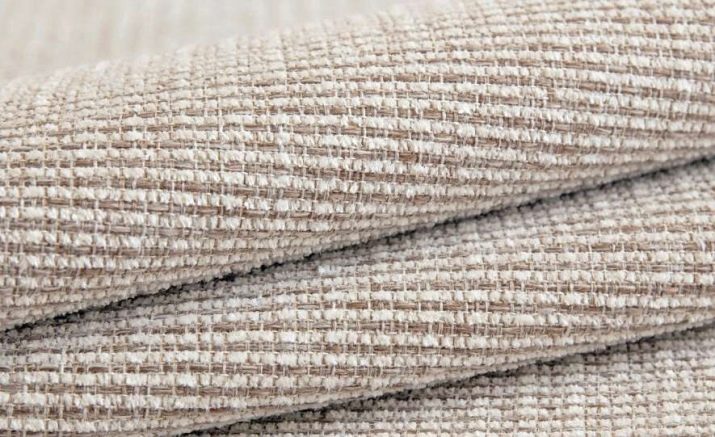
What it is?
Chenille is a textile with a dense texture used in furniture and interior decoration. It consists of natural and artificial fibers, it can be combined and synthetic. It is called an alternative to flock and matting.
However, in comparison with them, the material is thicker and heavier. It is a kind of jacquard, differing from it in higher quality. It has a peculiar weaving, is characterized by strength, durability, pleasant tactile sensations.
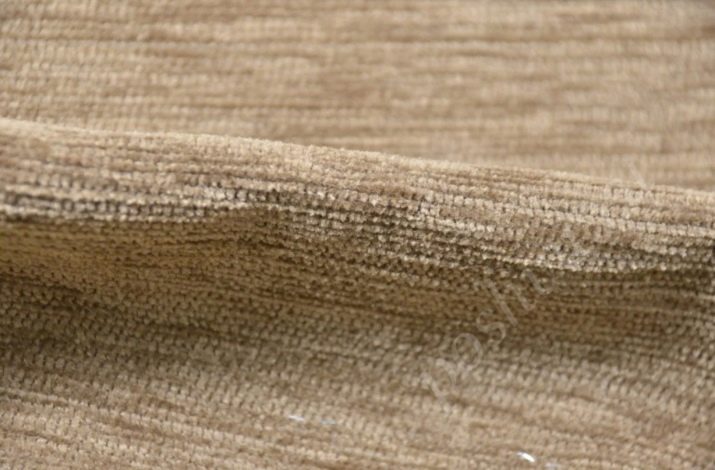
Warm and velvety to the touch, reminiscent of a canvas with an extra short pile. When it is directed in one direction or another, it slightly changes its shade. Modern chenille is resistant to fading, rubbing and creasing. It does not fade during use and can be draped into large folds.
It gets wet quickly when exposed to water. Not resistant to clues.
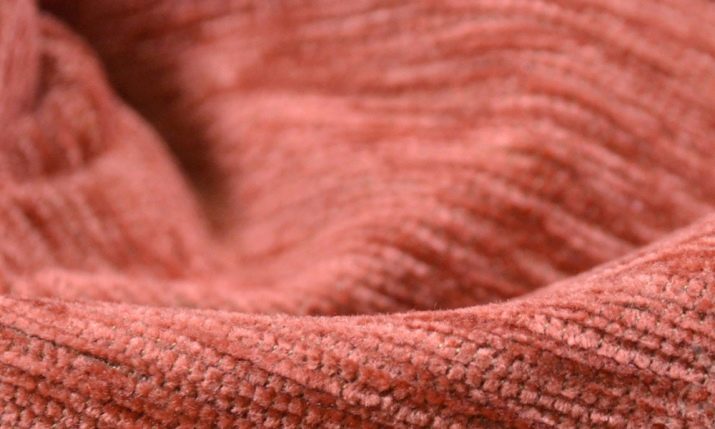
Eco-friendly, hygienic, breathable, cheaper than other materials. Resistant to the absorption of foreign odors, it is distinguished by its aesthetics of appearance. Along with this, the material is demanding in terms of care.
Its texture on the front and back sides is different. On the front surface there are more fluffy villi, they are more pronounced. From the inside out, the material is less textured.

History of origin
It is not known for certain when the first chenille fabric appeared. According to one hypothesis, its name has Latin roots.According to another version, it was first made about 200 years ago.
It was produced manually using a complex technology, therefore it was expensive. Only representatives of the wealthy estates could afford it. It differed from the materials known at that time in its special weaving and texture.
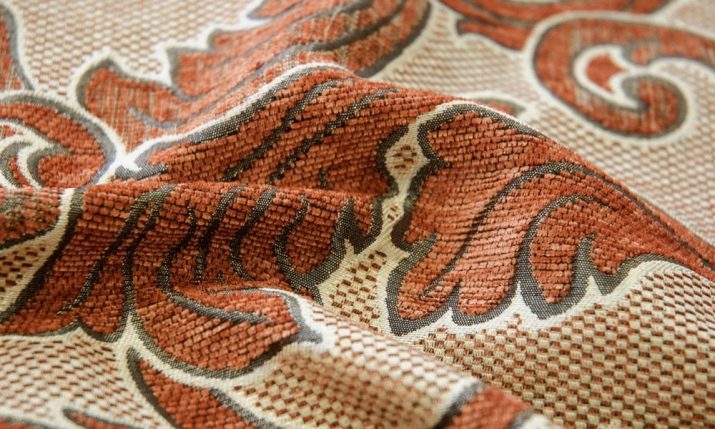
The USA is considered its homeland. The name may have come from the French word chenille, meaning caterpillar. To obtain a soft thread, the fiber was spun and then twisted. After that, the warp thread was wound on it.
The result was a thread resembling a caterpillar, the canvas acquired an unusual texture. The manufacturing technology involved painting. The density of the natural material was different.
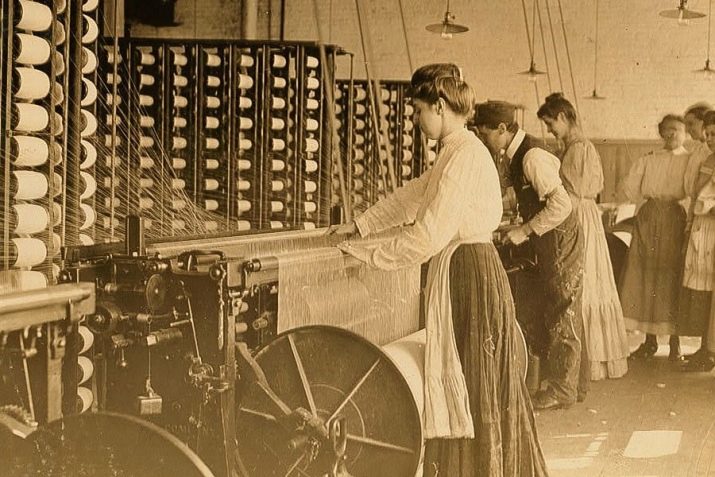
The general features were bulk, velvety, similarity to velor. However, these textiles were softer. With the development of industry, work began to be carried out on specialized equipment.
Today, chenille textiles are created by interweaving one or more threads. The weft threads pass between the main ones along a serpentine path. Due to the lack of fastening on the sides, a soft textured canvas is formed. Modern manufacturers, in addition to the chenille base, can use threads of other raw materials, thereby increasing the strength characteristics of the material.

Species overview
Chenille can be classified by color, composition, density, type of weaving. It is based on double weaving or fluffy threads, which are obtained in different ways.
They can be woven into the base, attached to it by means of a stream of hot air (glued). The basis of the canvas is made of non-fluffy fibers.
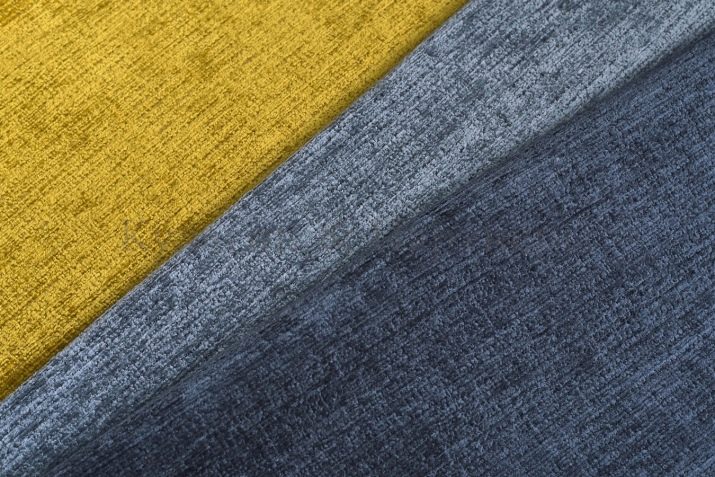
The glue base is good in that it does not allow the threads to be pulled out of the common weave due to accidental mechanical stress. Wicker is worse in this regard. Despite the quality, its threads slip out from the puffs.
According to the method of weaving, the canvases are divided into several types:
- tapestry;
- satin;
- twill;
- jacquard.
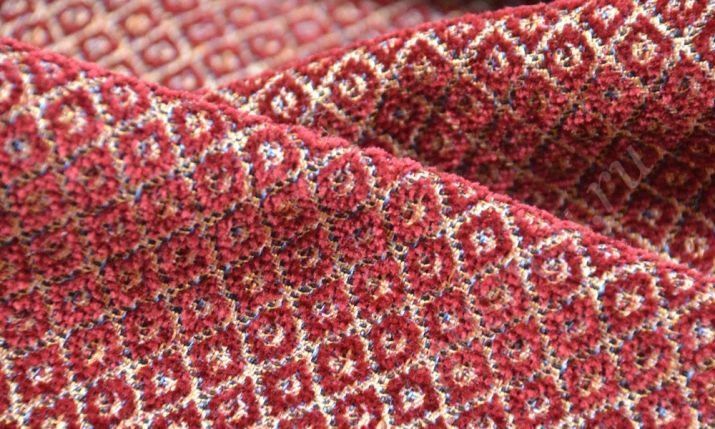
The type of weaving determines not only the appearance, but also the consumer characteristics. Each weave has its own pattern. For example, twill has diagonal stripes. Jacquard has a complex pattern. Satin is characterized by a rare interweaving of warp and weft threads. Tapestry varies and can be either sparse or made in satin technique.
The best option is the jacquard way. This fabric has a soft textured base and a flat embossed pattern.
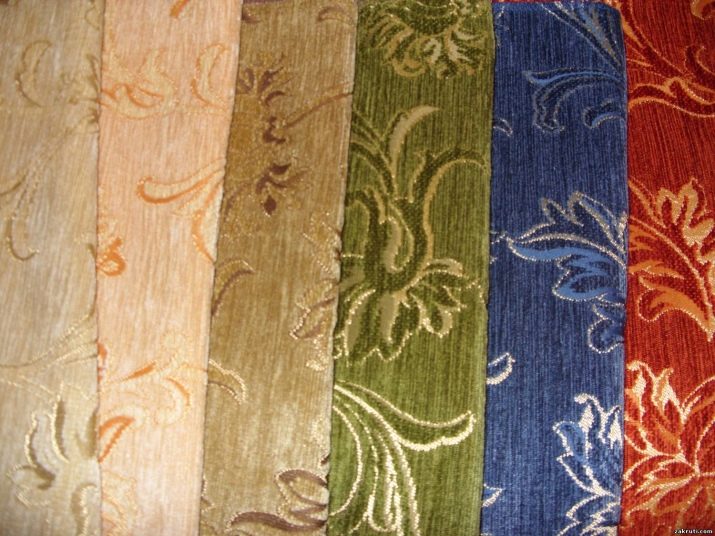
In order to improve the characteristics of the cloth, they are impregnated with compounds that make the material resistant to mold and fire. The number of threads in the fabric can be up to 18. The more there are, the greater the weight of the fabric. The fabric is dyed ready-made or before weaving.

By composition
Modern chenille fabrics vary in composition. Natural materials are made from cotton. Thanks to this, the textile is breathable and does not irritate the skin. It is not electrified, but less durable in use.
Synthetic fabrics are made from polyester and viscose. The addition of rayon fibers reduces the environmental friendliness of the chenille. However, this is offset by greater strength, attractive sheen and practicality.

Polyester varieties are considered the most durable and durable. They can have a characteristic sheen, more resistant to fading than others.
In addition to basic inclusions, the composition of the material may include acrylic, which improves the properties of the woven fabric. It is always bright, sometimes matte and with a slight sheen.
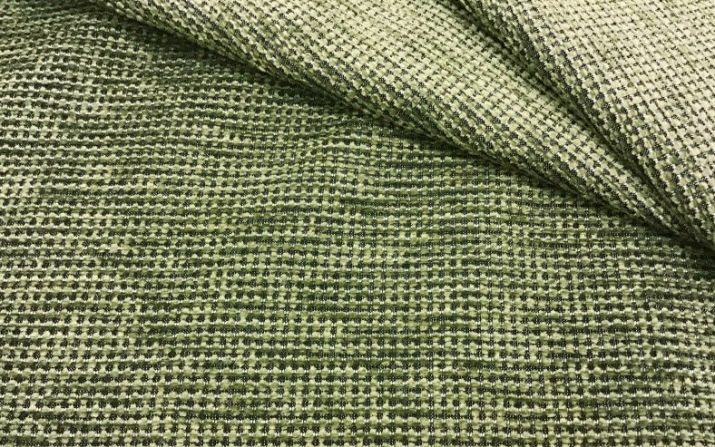
By color and design
Material color solutions can be very diverse. The palette of shades contains a lot of neutral, bright, muted, dark tones. Popular colors are burgundy, gray-pink, terracotta, brown, gray.
Each base color has several tones with different temperatures and degrees of saturation. The popular paints are blue, blue, lilac, mottled, sandy blue.

The design of textiles also varies. In addition to monochromatic canvases, brands offer to the attention of buyers materials in stripes, squares, with monogram ornaments, floral and plant motifs, and a diamond-shaped pattern.
Popular color options from leading manufacturers are damask, geometric and abstract designs.

The color fastness of the canvases is different. In production, it is tested by rubbing on a dry and damp base. Optimal values are 5 or more. If they are smaller, textiles will quickly tarnish during use.
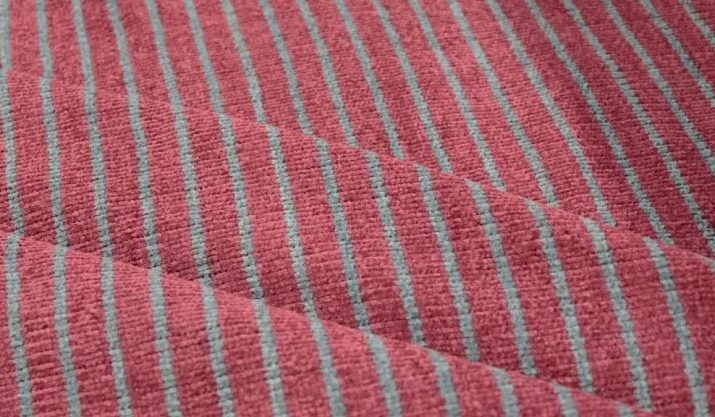
By density
Chenille has varying degrees of resistance to mechanical stress. Its density is standard and low. The more complex the weaving, the denser the matter.
The denser options have less hygroscopicity and breathability. Moreover, they serve for more than 6-7 years. The optimum value for decorative fabrics is 200 g / m2.
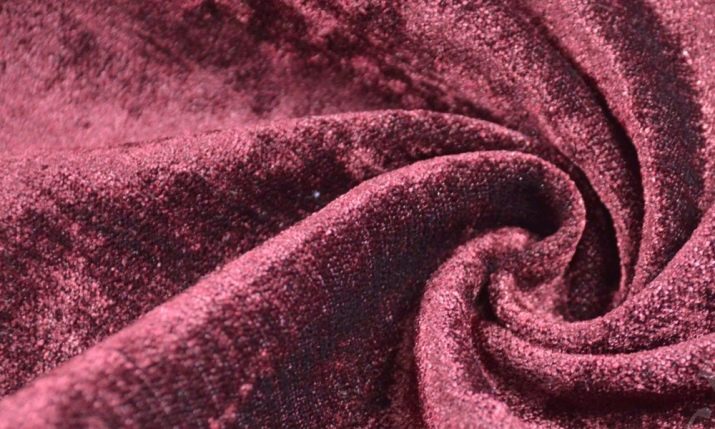
Extra dense synthetic fiber chenille attracts dust. It creates a favorable environment for the appearance of fungi and harmful bacteria.
High density can cause rupture of products at the seams at high stress. This can be due to low air capacity.

Wear resistance
Due to the structure and type of chenille threads used, the intensity of operation varies. The lower the indicators, the less stress that it can withstand.
The British Standards Institute has developed its own classification. According to her, the material is intended for delicate, everyday, intensive use. There are significant differences between them.
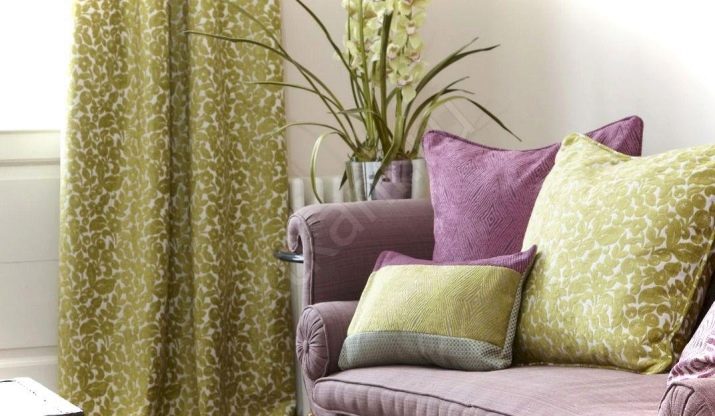
This criterion is determined by the Martindale and Wiesenbeck tests. In the course of their implementation, the canvas is fixed on the platform, subjecting it to friction using an abrasive disc or woolen cloth attached to a metal disc. 1 circle equals 1 cycle.
The fabrics of the first group are designed for 5000-15000 abrasion cycles. Indicators of analogs for daily use are from 15,000 to 20,000 cycles. The particularly robust versions can withstand over 20,000 cycles.
The higher the score, the better. Fabrics with high values are suitable for use in places with the greatest congestion of people. For example, they are used in salons, private hospitals, office buildings. Such materials are resistant to deformation and loss of attractiveness of their original appearance.
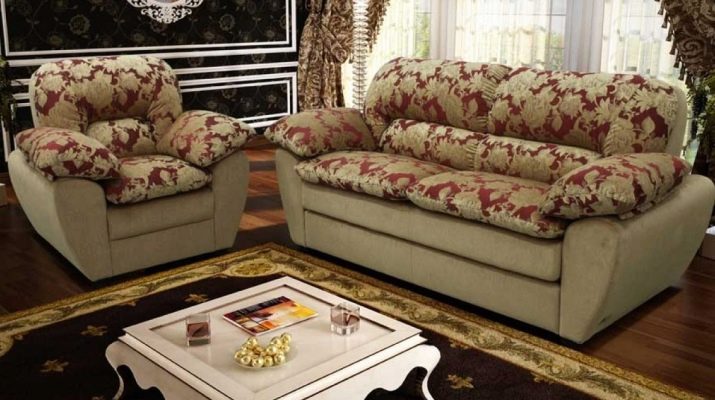
Areas of use
Chenille is used for upholstering furniture; it is used to make curtain fabrics for curtains. Furniture fabrics function as non-removable covers. Sofa modifications are used for seats, backs, armrests.
This material has low elasticity and different thickness, which determines the structure of the panel. Its color depends on the style of the furniture. In addition to the basic covers, it is used for upholstery of the included cushions.
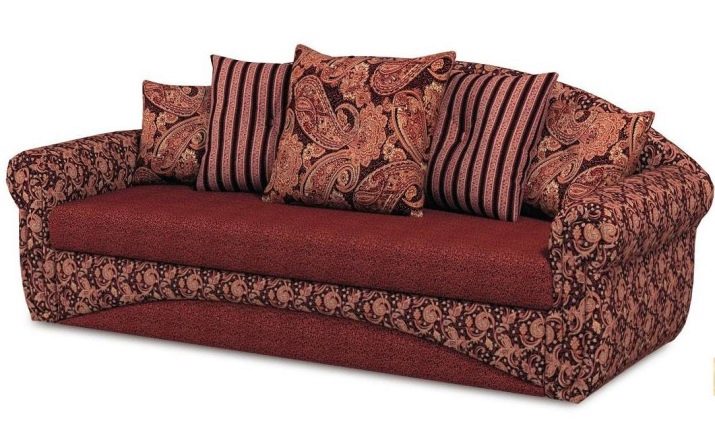
Besides, soft blankets, towels, tablecloths are made from chenille. These accessories are specific, but perfectly complement the interior in different styles. Home chenille textiles have a lower density.
Bedspreads and blankets are made from it without a stitch. They complement the interior, along with furniture and curtains. Such products have a solid appearance and a very tangible weight.
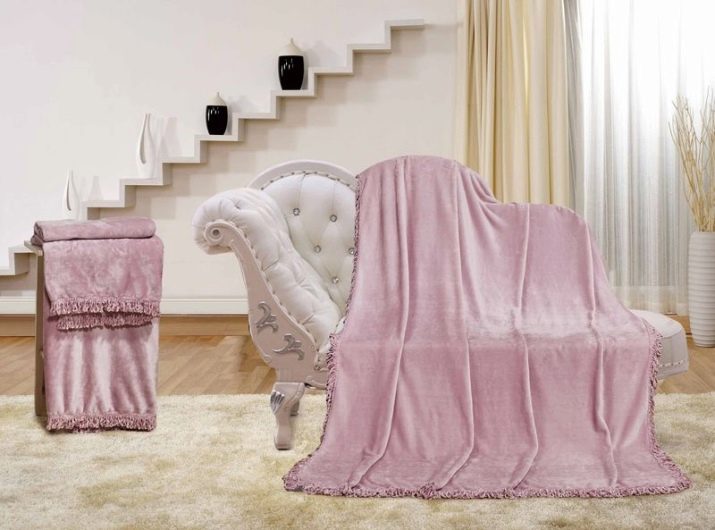
The material can be used as a kind of partitions. Due to its texture and density, it has soundproofing properties. In addition, it is used as a decoration in various design projects. Walls are sheathed with curtain fabric, it is used as a panel, curtains.
In the hands of craftswomen, chenille becomes a material for crafts. Needlewomen sew fluffy and warm wrap-around robes out of it. Less often, aprons are sewn from it.
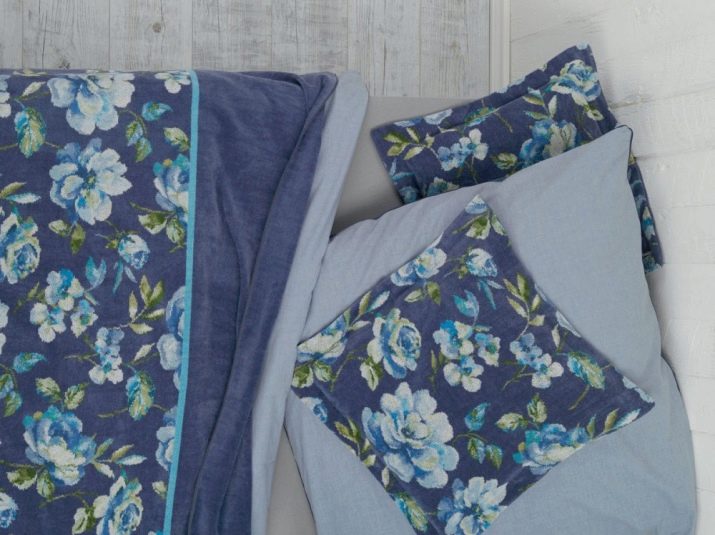
Chenille can be used in rooms of different types and purposes. It looks good on the living room windows, in bedroom and nursery textiles, office and study furniture. Suitable for decorating studio (open) apartments.

Criterias of choice
To buy a quality chenille, you need to take into account a number of nuances. The key ones are composition, density, abrasion, air permeability.
Some fabrics tend to pill. The top surface of higher quality materials is inert to pilling. You need to take fire-resistant options from high-quality raw materials.
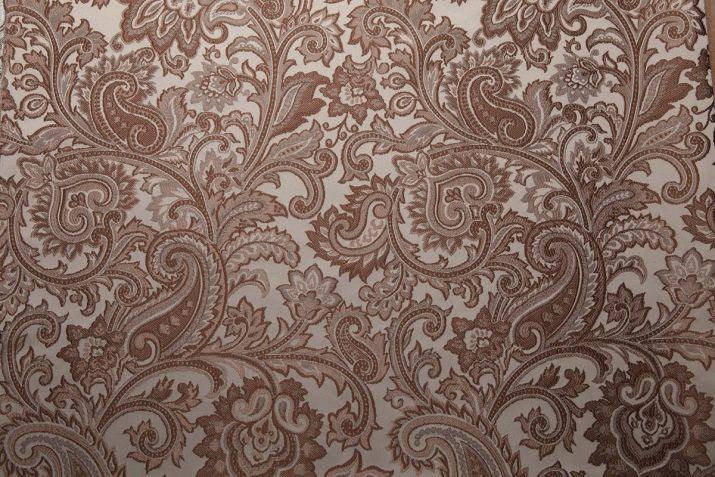
Variants for delicate use begin to roll off after 5000 cycles. Modifications for daily and intensive use are considered non-pilling.
When choosing a specific option, they take into account the purpose of the fabric. The dense chenille is suitable for upholstery. It will make an excellent volumetric cover for a chair seat, sofa, armchair, banquet.
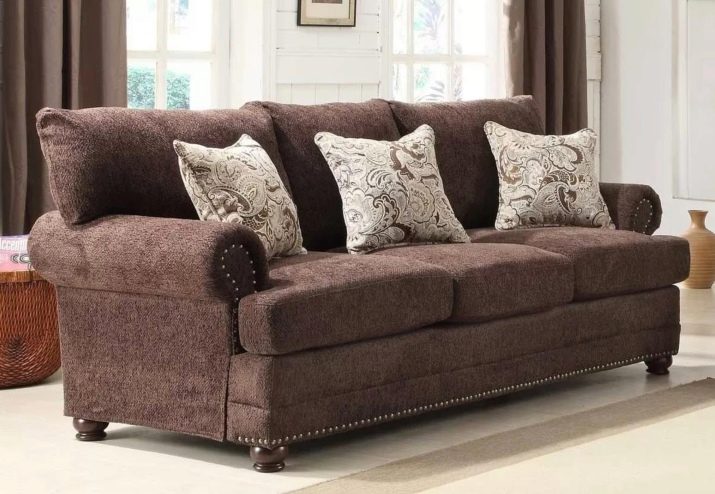
However, upholstery fabric for a sofa, armchair, pouf is not suitable for window decoration. Light textiles can create soft folds. It has sufficient light-absorbing ability.
He will be able to reliably hide the room from the sun and prying eyes from the street. At the same time, its aesthetic performance, with proper care, will be commensurate with fabrics for intensive use.
If a dog or cat lives at home, you should not take options with a loose structure. Very quickly, such a surface will be covered with puffs and holds. She will get worn out in the place of frequent sitting of the pet.
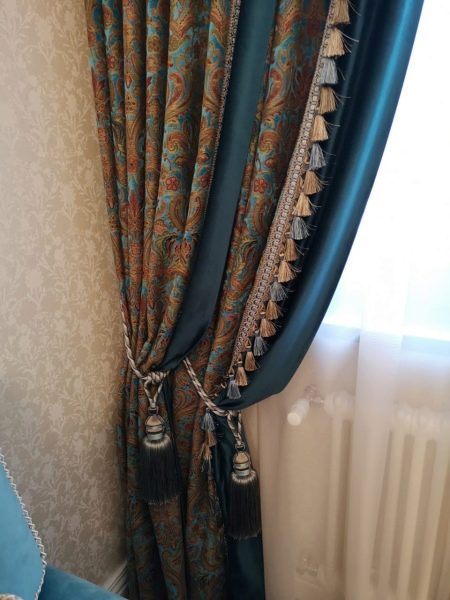
Care rules
You need to take care of the chenille correctly. According to the developed recommendations of manufacturers, upholstery materials are cleaned without the use of aggressive chemicals.
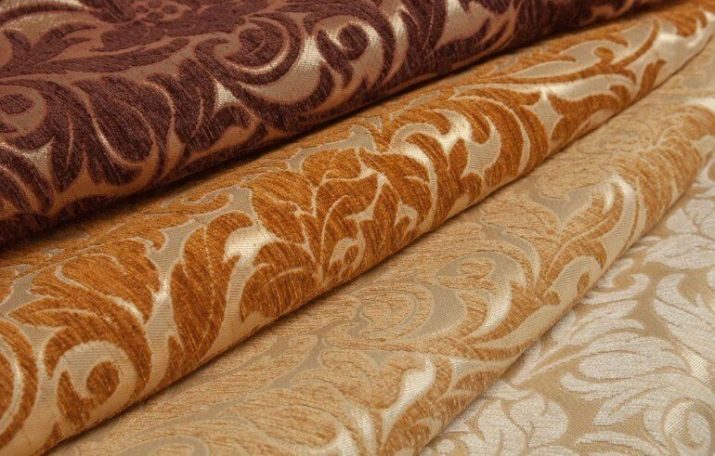
The material is not washed, therefore, during operation, you need to monitor its cleanliness. To keep its appearance and color aesthetic as long as possible, the surface is vacuumed and brushed. This should be done at least once a week.

They get rid of stains with a stain remover, which is designed specifically for upholstery textiles. This should be done immediately so that the stain does not become part of the picture. It is almost impossible to get rid of wax stains and tea.
In extreme cases, stains are removed with a mild soapy solution prepared from liquid soap and water. The treated area should dry naturally. After that, it is vacuumed.

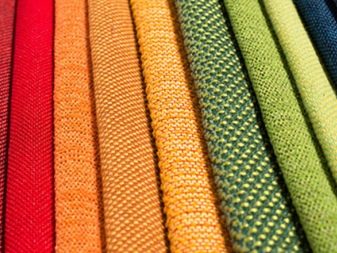
Dirty and dusty curtains can be dry cleaned. The material is not ironed. It is not placed near heat sources. If possible, it is protected from accidental wetting. This can leave streaks and stains on the surface. If the fabric is wet, a absorbent rag, cotton looped towel is applied to the area and pressed down to absorb as much water as possible.
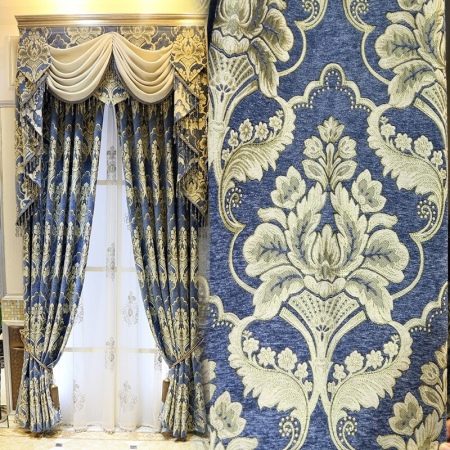
Rubbing the surface is not recommended. If the base is loose, the structure may be damaged. The fabric must be protected from contact with sharp and cutting objects. The surface can be treated with a soft sponge. If a pet with sharp claws lives at home, you will have to save textiles by trimming the claws or sticking special nails on them.









